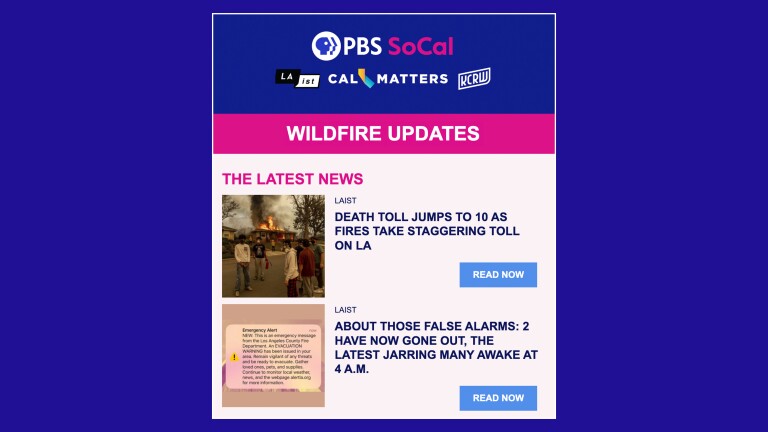Malibu’s Ocean Life Isn’t Safe From Fire, and the Worst Effects are Yet to Come

This article was originally published Feb. 1, 2025 on laist.com.
The Palisades Fire destroyed thousands of structures and killed 12 people. Now, as fire victims gather their lives after the destruction, environmental concerns have emerged in the region.
Urban fires pose particular threats to marine ecosystems. Debris and toxins released from the fires can damage kelp forests and lead to destructive algal blooms that snuff out ocean life.
Now that Los Angeles is finally seeing some much needed rain, the worst effects in the ocean are expected to begin.
As wildfires impact our communities, your trusted public media organizations have come together to deliver free, reliable, and essential news and updates.

Kelp forests under threat

“The Malibu coastline is extremely unique,” said Dan Pondella, a professor of biology at Occidental College and research director at the Southern California Marine Institute. “It’s probably the highest density of fishes throughout Southern California.”
And the fish owe their flourishing numbers to the pristine kelp beds that pepper the coast, Pondella added.
These kelp forests are like three-dimensional coral reefs that tower nearly 200 feet above the ocean floor. Thousands of marine species of every shape and color depend on them for food and shelter.
“Imagine scrubbing it down to almost nothing. Bare rocks with nothing on it,” Pondella said.

That’s what happens when rain mixes with debris from burn scars. A slurry of mud, rocks and rubble pours into ocean, which Pondella said can act like both sandpaper and a blackout curtain for the fragile kelp forests.
“You’ll see anything from reduced light, which limits photosynthesis in plant and algal growth, to reefs actually being completely buried in ash,” he said.
That layer of ash can also remain in the environment for a long time.
When the Woolsey Fire tore through Malibu in 2018, it dumped thousands of tons of ash into the ocean, which Pondella's team was still finding in Malibu’s reefs five years later.

A lasting nutrient imbalance
Ash doesn’t just affect the reefs, it changes the water. When ash and water mix they form lye — a caustic chemical used in soap — which alters the pH of the ocean. Ash can also carry high levels of sulfates and phosphates.
Combined, these chemicals can negatively affect microbial life, said Tina Treude, a professor of marine biology at UCLA who studies the biogeochemical processes in the ocean that maintain life up and down the food chain.
She said Malibu’s marine life is dependent on a balance of nutrients that wells up from the deep sea — a balance that an urban fire like Palisades will likely upset.
“What can happen is it fertilizes an extra algal bloom, which rains down into the deeper ocean where it will be degraded,” creating what’s commonly called “dead zones,” or areas with oxygen too low to sustain most marine life, Treude said.
Among the few things that can still survive in dead zones are toxic algae, she added.
Poisoned water
Emily Klonicki-Ference, a doctoral student at Treude’s lab, is spearheading a research proposal to measure levels of various toxins that researchers hypothesize were released by the Palisades and Eaton fires into waterways, including the ocean and creeks in Altadena.
That's because when fire tears through an urban landscape, it’s not the same as trees burning in a forest, she said. It's homes, industrial areas, commercial buildings, vehicles, which means a lot of toxic contaminants.
Klonicki-Ference listed heavy metals like arsenic, mercury, lead, copper, or cadmium as potential contaminants. Most of these metals are toxic on their own, but are even more dangerous when they form salts by mixing with other chemicals in the ocean. And there's carcinogens from burned plastic, she added.

No time to adapt
Just before the Palisades Fire broke out, Pondella and his team of researchers finished an exhaustive two-year survey of Malibu’s coastline. He said this gives them a unique opportunity to compare the ocean environment before and after the Palisades Fire.
Pondella said marine life has evolved along with California's coastal environments over millions of years — which fires have shaped and reshaped. But the increasing frequency and intensity of these fires is outpacing the speed of adaptation.
“The change of the input is so dramatic that the system cannot co-evolve to absorb those changes," he said.
It will take time to determine the full scope of the damage to Malibu's marine life, but he knows one thing already: it will likely transform the landscape for many years to come.

